Finding reliable electric vehicle charging stations is essential for seamless travel. This article explores the locations of charging stations, compatibility with various EV models, and effective travel planning strategies. Discover the types of charging stations available, the importance of charging speed, and how to utilise apps for route optimisation. Learn about the costs associated with charging and the unique features some stations offer to enhance your travel experience.
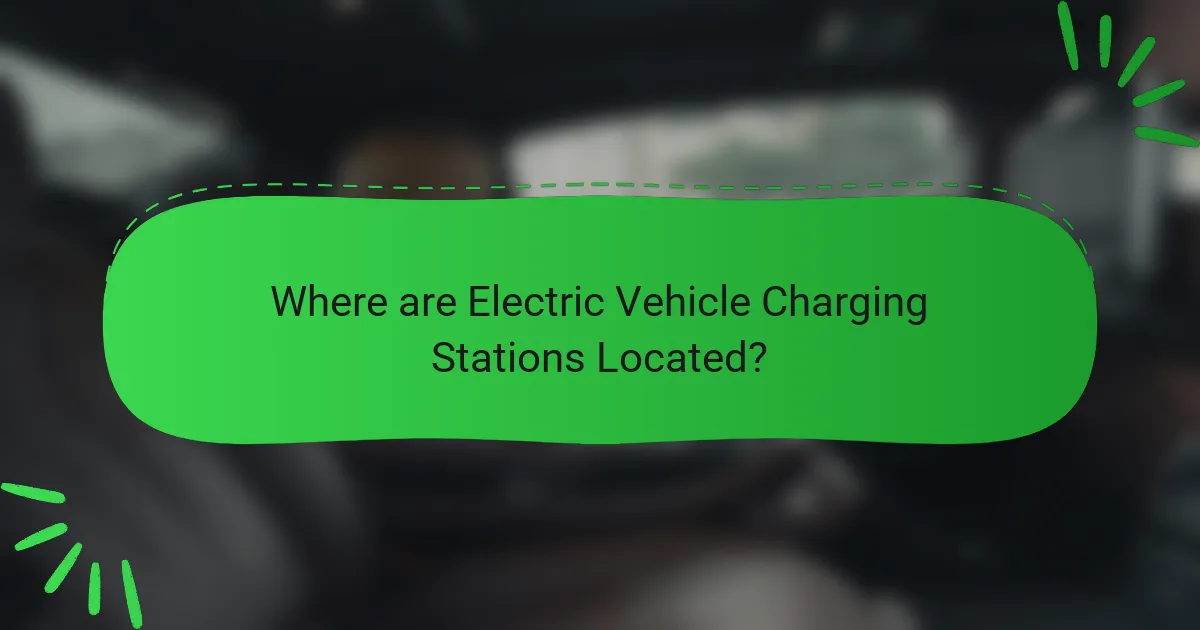
Where are Electric Vehicle Charging Stations Located?
Electric vehicle charging stations are commonly found in urban areas, highways, and popular destinations. Major networks include ChargePoint, EVgo, and Tesla Superchargers, ensuring compatibility with various EV models. Travel planning apps can help locate nearby stations, facilitating longer trips.
What Factors Influence Charging Station Placement?
Charging station placement is influenced by factors such as location density, accessibility, and user demand. Urban areas with high electric vehicle ownership require more stations. Proximity to amenities like shopping centres enhances convenience. Additionally, government policies and incentives can dictate optimal placement. Traffic patterns and travel routes are critical for ensuring stations support long-distance travel effectively.
How to Find Charging Stations on Popular Navigation Apps?
Use popular navigation apps like Google Maps, Waze, or Apple Maps to find electric vehicle charging stations. Simply enter “charging stations” in the search bar. These apps display nearby stations, including details on compatibility and availability. Google Maps shows user reviews and photos, while Waze offers real-time updates on station status.
Which Regions Have the Most Charging Infrastructure?
The regions with the most electric vehicle charging infrastructure include California, Europe, and China. California leads with over 80,000 charging stations, significantly outpacing other regions. Europe, particularly countries like Norway and the Netherlands, has a high density of chargers relative to its population. China follows closely, investing heavily in expanding its network to support its growing electric vehicle market.
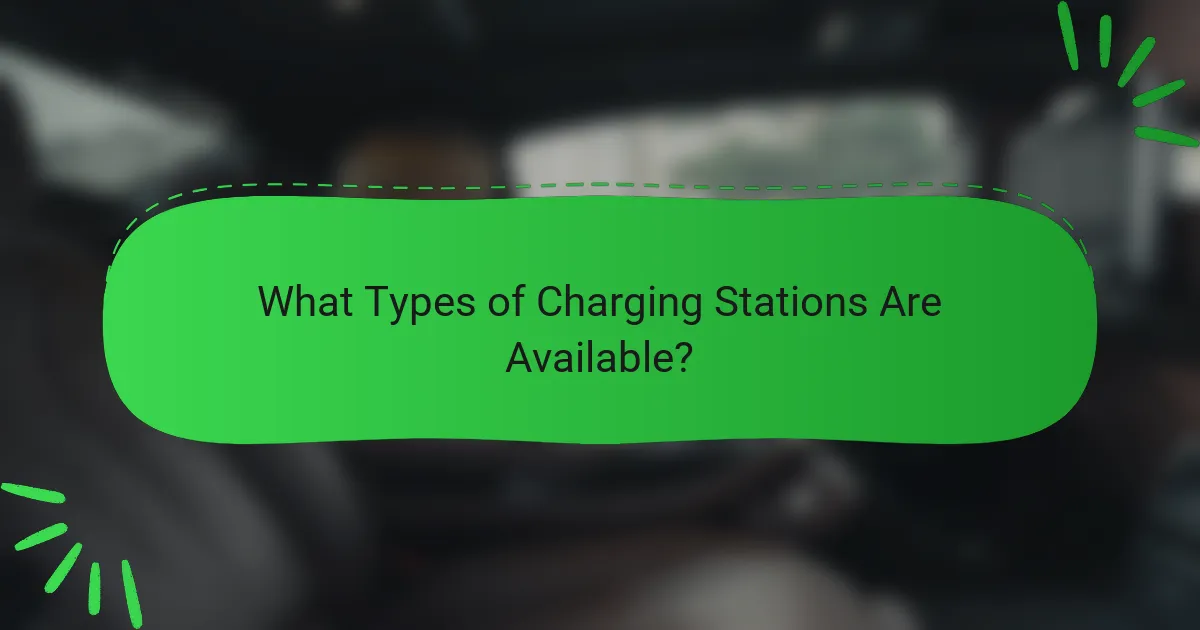
What Types of Charging Stations Are Available?
Three main types of electric vehicle charging stations are available: Level 1, Level 2, and DC Fast Charging. Level 1 stations use standard household outlets and are suitable for overnight charging. Level 2 stations provide faster charging using a dedicated circuit, ideal for homes and public locations. DC Fast Charging delivers rapid charging, making it suitable for long-distance travel and quick stops.
How Do Level 1, Level 2, and DC Fast Chargers Differ?
Level 1 chargers are standard household outlets, Level 2 chargers are more powerful and typically found in public stations, while DC Fast Chargers provide rapid charging for long-distance travel. Each type varies in charging speed and installation requirements.
| Charger Type | Charging Speed | Typical Location | Installation Cost |
|——————-|———————-|—————————|———————|
| Level 1 | 2-5 miles per hour | Home | Low |
| Level 2 | 10-60 miles per hour | Public stations, homes | Moderate |
| DC Fast Charger | 60-100 miles in 20 minutes | Highway rest areas | High |
What Are the Benefits of Each Charging Station Type?
Each type of electric vehicle charging station offers distinct benefits tailored to different needs. Level 1 stations provide slow charging, ideal for home use and overnight charging. Level 2 stations offer faster charging, suitable for public locations and workplaces. DC fast chargers deliver rapid charging, perfect for long-distance travel and minimising downtime.
| Charging Station Type | Charging Speed | Ideal Use Case | Typical Location |
|———————–|—————-|——————————|————————–|
| Level 1 | 2-5 miles/hour | Home charging | Residential garages |
| Level 2 | 10-20 miles/hour| Workplaces, public areas | Shopping centres, offices |
| DC Fast Charger | 60-100 miles/30 minutes | Road trips, quick stops | Highway rest areas |
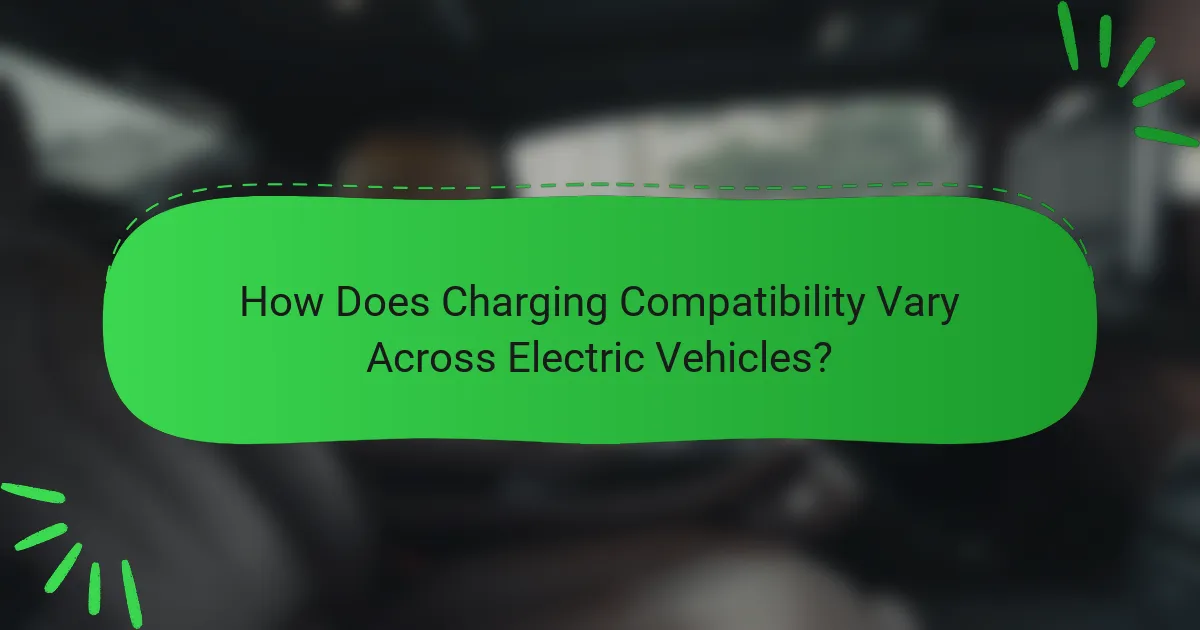
How Does Charging Compatibility Vary Across Electric Vehicles?
Charging compatibility varies significantly across electric vehicles due to differing charging standards and connector types. Most electric vehicles utilise either Type 1 or Type 2 connectors, while some models may require CCS or CHAdeMO adapters.
Charging speed is another factor; some vehicles support fast charging, enabling quicker refuelling at compatible stations. Additionally, regional differences in charging infrastructure can impact availability and compatibility. For instance, Tesla vehicles have proprietary connectors, requiring adapters for non-Tesla stations.
Understanding these variations is crucial for effective travel planning, ensuring that drivers can find compatible charging stations along their routes.
Which Charging Standards Are Most Commonly Used?
The most commonly used charging standards for electric vehicle charging stations are Level 1, Level 2, and DC Fast Charging. Level 1 uses standard household outlets, providing slow charging. Level 2 offers faster charging with specialised equipment, ideal for home or public stations. DC Fast Charging delivers rapid charging, suitable for long-distance travel, significantly reducing downtime. These standards ensure compatibility across various electric vehicle models, enhancing user convenience.
How to Check Compatibility Before Charging?
To check compatibility before charging, verify the charging station’s connector type matches your electric vehicle’s requirements. Different electric vehicles use various charging standards, such as Type 1, Type 2, or CCS. Additionally, confirm the charging station’s power output aligns with your vehicle’s maximum charging capacity to ensure efficient charging. Always consult your vehicle’s manual for specific compatibility details.
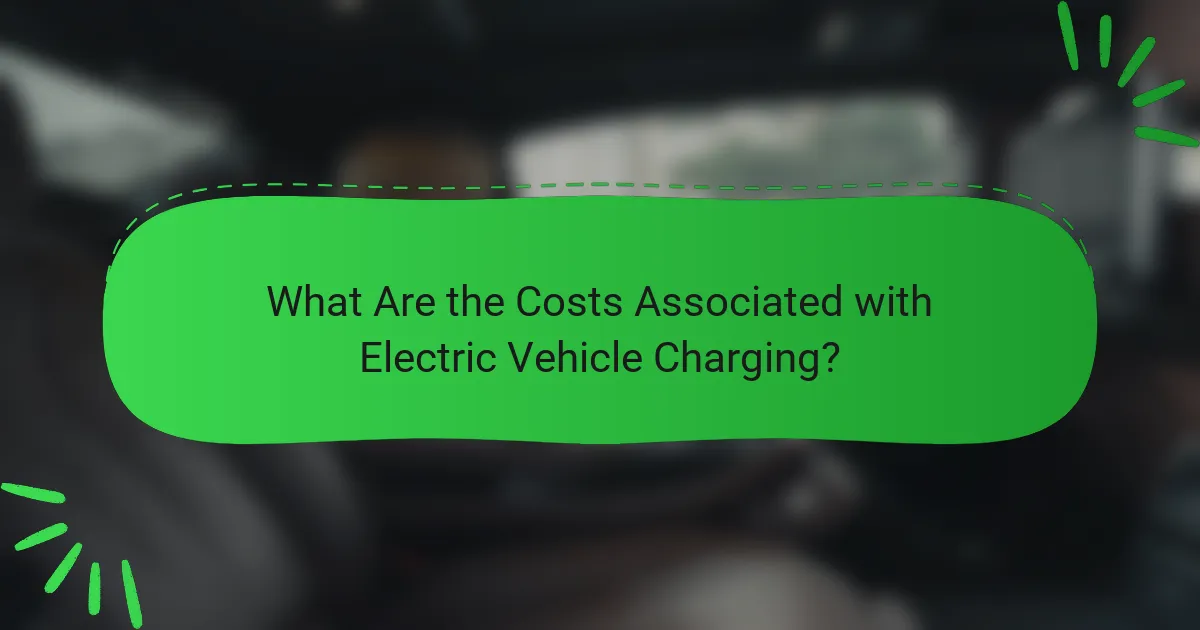
What Are the Costs Associated with Electric Vehicle Charging?
The costs associated with electric vehicle charging vary based on location, charging speed, and energy prices. Public charging stations may charge per kilowatt-hour or per session, averaging between $0.10 to $0.30 per kWh. Home charging costs depend on local electricity rates, typically ranging from $0.12 to $0.20 per kWh. Fast chargers often have higher fees, reflecting their quicker service, sometimes exceeding $0.40 per kWh. Additional costs may arise from subscription fees or membership programmes at certain networks.
How Do Charging Fees Compare Across Different Locations?
Charging fees for electric vehicle charging stations vary significantly by location. Urban areas typically have higher fees due to demand, while rural locations often offer lower rates to encourage usage.
| Location Type | Average Charging Fee | Compatibility | Notes |
|—————|———————|—————|——-|
| Urban | $0.20 – $0.50/kWh | High | Many options available |
| Suburban | $0.10 – $0.30/kWh | Moderate | Limited stations |
| Rural | $0.05 – $0.15/kWh | Low | Few charging points |
What Payment Methods Are Accepted at Charging Stations?
Charging stations typically accept credit cards, debit cards, mobile payments, and membership cards. Payment methods can vary by location and provider, impacting convenience for users. Many charging networks offer contactless payment options for ease of use. Some stations may also support specific apps for payment processing.

How Can Travelers Plan Their Routes with Charging Stations in Mind?
Travelers can effectively plan routes by using apps that display electric vehicle charging station locations. These apps often provide real-time availability, charging speeds, and compatibility with various EV models.
Planning involves selecting routes that include charging stations at intervals suitable for the vehicle’s range. Knowing the charging station types, such as Level 2 and DC fast chargers, helps optimise stops.
Travelers should consider factors like charging time and station amenities, ensuring a comfortable wait. Researching routes beforehand can significantly enhance the travel experience, reducing range anxiety.
Utilising navigation systems that integrate charging station data can streamline the journey, making it more efficient and enjoyable.
What Tools Are Available for Route Planning with Charging Stops?
Various tools are available for route planning with charging stops, enhancing travel efficiency for electric vehicle users. Popular options include mobile apps like PlugShare, ChargePoint, and A Better Route Planner. These applications provide real-time information on charging station locations, compatibility with different EV models, and estimated charging times. Users can customise routes based on their vehicle’s range and charging preferences, ensuring a smooth travel experience while minimising downtime.
How to Estimate Charging Time During Long Trips?
To estimate charging time during long trips, consider the vehicle’s battery capacity and the charging station’s output. Charging times vary based on the charging level.
For Level 1 chargers (120V), expect around 4-5 miles of range per hour. Level 2 chargers (240V) provide about 25 miles of range per hour. DC fast chargers can deliver 80% charge in 30 minutes for many electric vehicles.
Plan your route by identifying available charging stations along the way. Use apps that show real-time availability and compatibility with your electric vehicle. Always account for potential delays or longer charging times at busy stations.
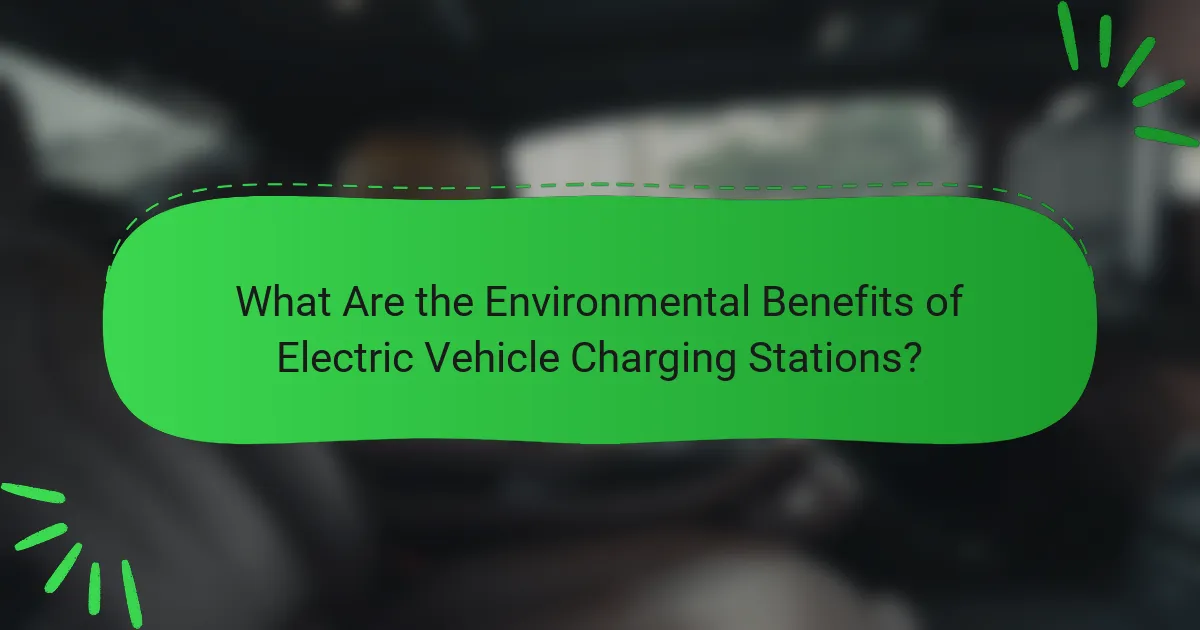
What Are the Environmental Benefits of Electric Vehicle Charging Stations?
Electric vehicle charging stations provide significant environmental benefits by reducing greenhouse gas emissions and promoting cleaner air. They support the transition from fossil fuels to renewable energy sources, decreasing reliance on traditional petrol stations.
By facilitating the use of electric vehicles, these stations contribute to lower urban pollution levels. Studies show that electric vehicles can reduce emissions by up to 50% compared to petrol vehicles, depending on the energy source used for charging.
Moreover, the integration of solar-powered charging stations enhances sustainability. These stations harness renewable energy, further minimising carbon footprints.
Overall, electric vehicle charging stations play a crucial role in fostering a cleaner, more sustainable transportation ecosystem.
How Do Charging Stations Contribute to Reducing Carbon Footprint?
Electric vehicle charging stations significantly reduce carbon footprints by promoting the use of clean energy. They enable drivers to charge vehicles using renewable sources, minimising reliance on fossil fuels. Charging stations facilitate longer travel distances for electric vehicles, encouraging more people to adopt eco-friendly transportation. As a result, increased accessibility to charging stations directly correlates with reduced greenhouse gas emissions.
What Role Do Charging Stations Play in Sustainable Urban Development?
Electric vehicle charging stations are essential for sustainable urban development as they promote cleaner transportation. They reduce greenhouse gas emissions and support the transition to electric vehicles. Increased accessibility to charging stations encourages more drivers to choose electric vehicles, enhancing urban air quality.
Strategically placed charging stations can improve travel planning, allowing for seamless long-distance electric vehicle journeys. Compatibility with various electric vehicle models is crucial, ensuring users can charge regardless of their vehicle brand.
Moreover, integrating charging stations into urban infrastructure can stimulate local economies. Businesses near charging locations may experience increased foot traffic, driving sales while supporting sustainability goals.
In summary, electric vehicle charging stations play a vital role in promoting sustainable urban development by enhancing accessibility, supporting cleaner transportation, and stimulating economic growth.

What Unique Features Can Be Found at Some Charging Stations?
Unique features at some electric vehicle charging stations include high-speed charging options, solar power integration, and amenities like rest areas or cafes. These features enhance user convenience and sustainability. High-speed chargers can reduce charging time significantly, while solar power can provide renewable energy. Some stations offer unique services like vehicle maintenance or shopping facilities nearby, making them more attractive for travelers.
How Do Amenities at Charging Stations Enhance User Experience?
Amenities at charging stations significantly enhance user experience by providing convenience and comfort during charging sessions. These features include Wi-Fi access, seating areas, restrooms, and food options, which make waiting times more enjoyable. Charging stations with amenities can improve customer satisfaction and encourage longer stays, leading to increased usage. Additionally, the presence of amenities can differentiate charging stations in competitive markets, attracting more electric vehicle users.
Which Charging Stations Offer Renewable Energy Sources?
Many electric vehicle charging stations utilise renewable energy sources, providing eco-friendly charging options. Notable networks include ChargePoint, EVgo, and Tesla Superchargers, which often source power from solar or wind energy. These stations contribute to reducing carbon emissions and promoting sustainability in transportation.

What Common Challenges Do Users Face at Charging Stations?
Users commonly face challenges such as limited charging station availability, compatibility issues with different EV models, and long wait times. These factors can hinder the convenience of charging during travel.
Limited charging infrastructure often results in users struggling to find stations, especially in rural areas. Compatibility issues arise when stations do not support specific EV connectors, leading to frustration. Additionally, high demand at popular stations can result in extended wait times, impacting travel plans.
To address these challenges, users can utilise apps that provide real-time information on charging station locations, availability, and compatibility. Planning trips around known charging stations can also enhance the travel experience, ensuring that users encounter fewer obstacles.
How to Troubleshoot Charging Issues on the Go?
To troubleshoot charging issues on the go, ensure your electric vehicle is compatible with the charging station. Check for available charging stations through apps or navigation systems. Verify the station’s operational status and connector type. If problems persist, consider using a mobile charging service or contacting roadside assistance.
What Are the Most Frequently Encountered Problems at Charging Stations?
The most frequently encountered problems at charging stations include limited availability, compatibility issues, broken chargers, slow charging speeds, and payment problems. These issues can hinder the overall electric vehicle charging experience.
Limited availability occurs when stations are occupied or out of service. Compatibility issues arise when a vehicle’s charging port does not match the station’s connector type. Broken chargers can lead to wasted time and frustration for users. Slow charging speeds may extend wait times, especially during peak travel periods. Payment problems can complicate the charging process, particularly if users encounter difficulties with apps or payment methods.

What Best Practices Should Users Follow When Using Charging Stations?
Users should follow best practices such as checking compatibility, planning routes, and monitoring charging times.
First, verify that your electric vehicle is compatible with the charging station. Different stations may support various plug types, affecting charging efficiency.
Next, plan your travel route to include charging stations, ensuring you have access to power along your journey. Use apps or maps that highlight charging locations and their availability.
Lastly, monitor charging times to avoid unnecessary delays. Charging speeds vary, so knowing how long you need to stay at a station can optimise your travel schedule.
How to Optimize Charging Time and Costs?
To optimise charging time and costs for electric vehicles, utilise fast charging stations, plan trips around charging networks, and take advantage of off-peak electricity rates. Fast chargers can significantly reduce charging duration, allowing drivers to recharge quickly during stops. Mapping out charging locations in advance ensures accessibility and minimises downtime. Charging during off-peak hours can lower electricity costs, enhancing overall travel efficiency.
What Common Mistakes Should Be Avoided When Charging an Electric Vehicle?
To avoid common mistakes when charging an electric vehicle, ensure you use compatible charging stations, monitor charging time, and avoid overcharging. Incorrect station use can lead to inefficiencies and potential damage. Planning charging stops during travel is crucial for optimal range management.
